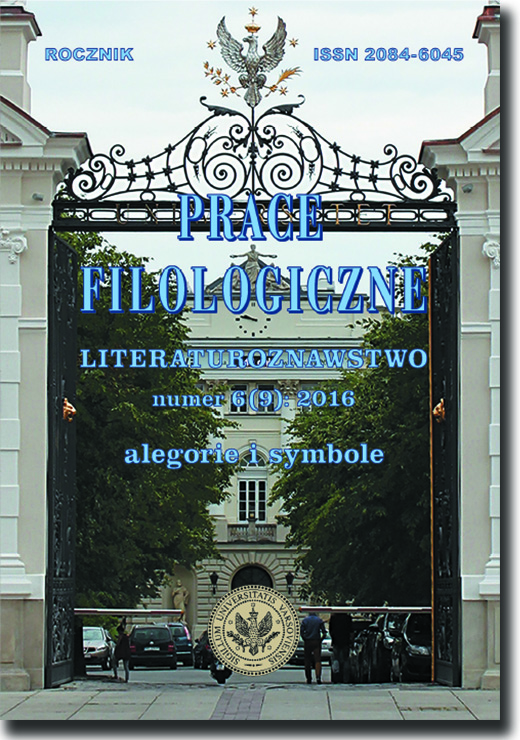The use of the tetragrammaton symbolism in {O ślachetności a zacności płci niewieściej (On the nobility and excellence of the feminine sex)} (1575) by Maciej Wirzbięta
Wykorzystanie symboliki tetragramu w {O ślachetności a zacności płci niewieściej} (1575) Macieja Wirzbięty
Author(s): Marta Wojtkowska-MaksymikSubject(s): Literary Texts, Studies of Literature
Published by: Wydział Polonistyki Uniwersytetu Warszawskiego
Keywords: kabała; gematria; tetragramat; Heinrich Cornelius Agrippa von Nettesheim; Maciej Wirzbięta; kabbalah; gematria; tetragrammaton; Heinrich Cornelius Agrippa von Nettesheim; Maciej Wirzbięta
Summary/Abstract: The subject of this article is the comparative analysis of short excerpts of two works: {De nobilitate et praecellentia foeminei sexus declamatio} (Antwerp, 1529) by Heinrich Cornelius Agrippa von Nettesheim and the Polish translation of this work, i.e. {O ślachetności a zacności płci niewieściej} (Cracow, 1575) by Maciej Wirzbięta. The author concentrates on the question of meaning of the first parents names, Adam and Eve, which was addressed by both writers in order to prove the validity of the thesis on the superiority of women over men and reveals the resources used in the discourse: from the works of the Fathers and Doctors of the Church, (e.g. St. Jerome, Psuedo-Cyprian) to the works of philosophers and humanists at the turn of the 15th and 16th centuries (e.g. Heinrich Cornelius Agrippa, Johannes Reuchlin, Jacques Lef?vre d’Étaples) fascinated with Jewish Kabbalah and gematria and the related theory of the names of God and the symbolism of tetragrammaton (JHWH).
Journal: Prace Filologiczne. Literaturoznawstwo [PFLIT]
- Issue Year: 2016
- Issue No: 6 (9)
- Page Range: 283-295
- Page Count: 13
- Language: Polish

